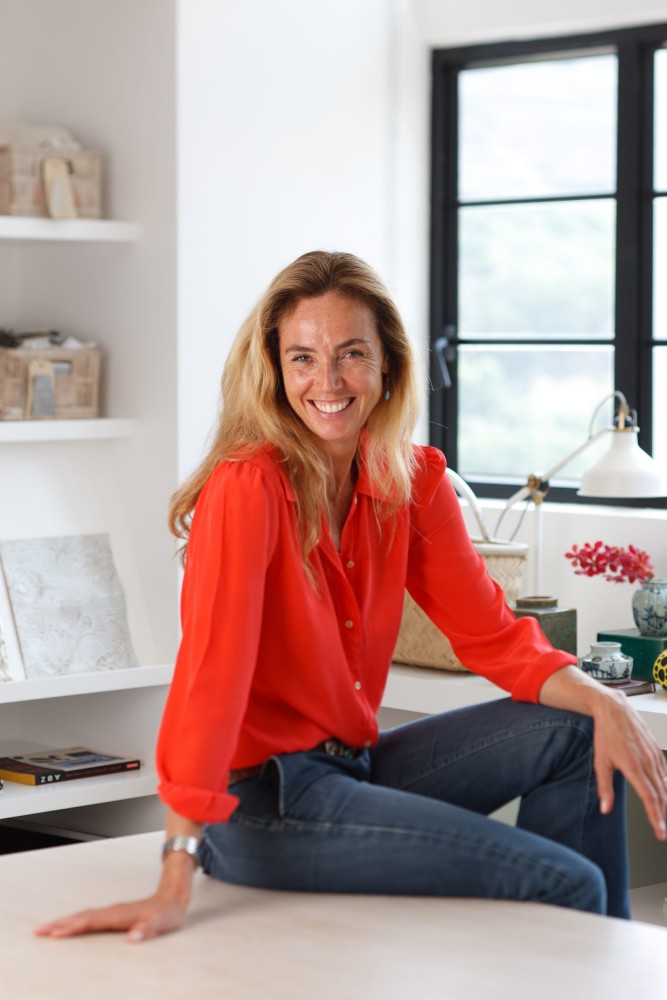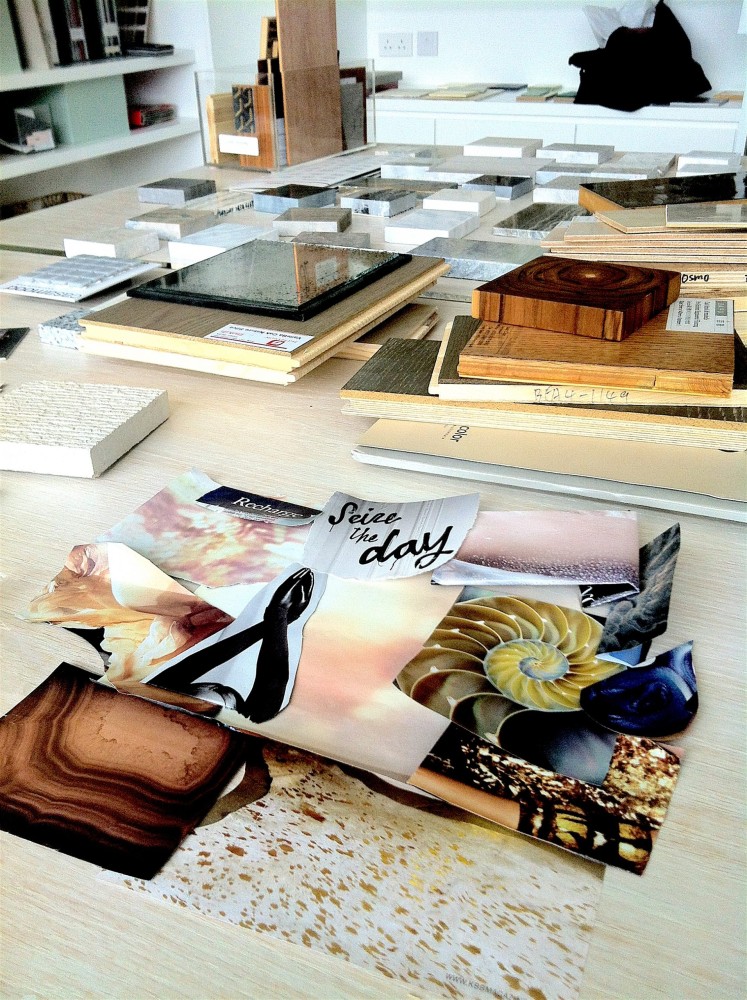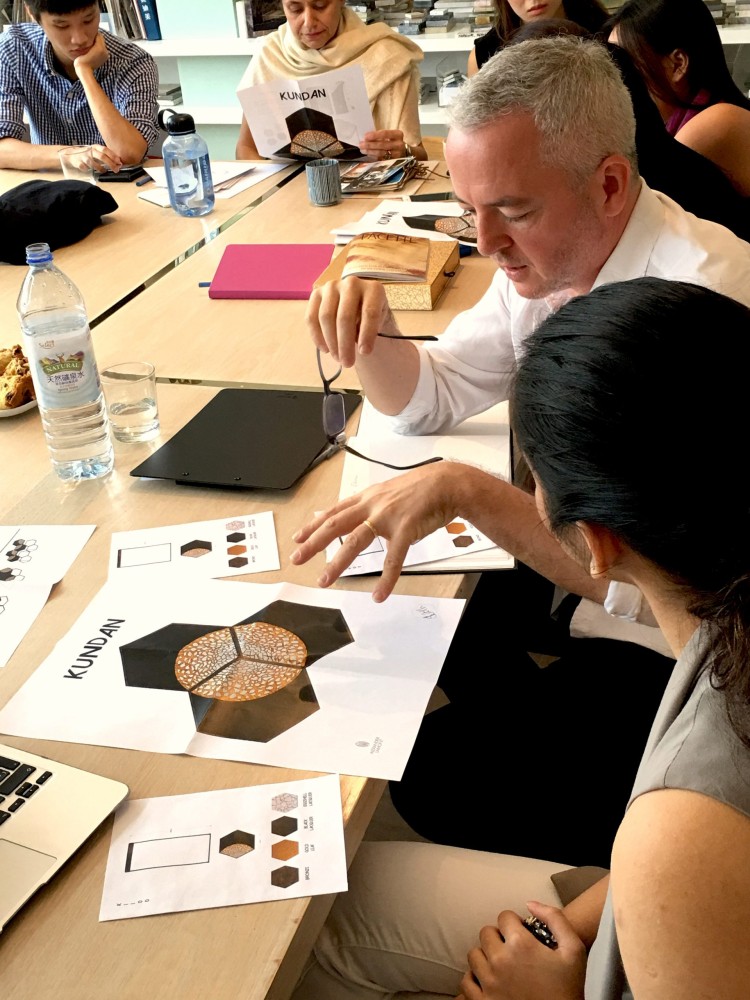Insight School of Interior Design founder on inspiring a new generation of creatives
Dec 01, 2021
As the founder and principal of Insight School of Interior Design, Eve Mercier is helping a wide range of Hong Kong design hopefuls chart a bold new career path. She speaks to #legend about transforming the way they view creativity and finding inspiration in the smallest of details
From left: Eve Mercier; inside a classroom in Chai Wan
Please write down five words that define your design style. This is the first activity any student at the Insight School of Interior Design is asked to complete. Seems simple enough but turns out it’s not the easiest task. My fellow students and I are taking a five-day short course in Styling and Decorating, and we put down words like “light”, “relaxed”, “industrial”.
Many will change those words by the end of the first day and even more by the end of the course, which guides us through mood board creation, lighting, fabrics, materials, colour and space. There are activities every week. One is to paint or design walls in a dark tone to explore which colours shrink or enlarge a space. Another task is to mix beiges with similar undertones and see what comes out.
One of the class favourites is tile design on the fifth day, when we create tiles for a different room from the one we’ve worked on across the course. The school insists on getting students’ hands dirty. Even in the short courses, there is homework given to drill home the ideas covered in lecture. The final product is always satisfying and the breadth of interpretations among students is proof positive that founder and principal Eve Mercier was on to something when she established the school.

How did the idea of starting an interior design school in Hong Kong come about?
I’m a journalist and an art historian by training – a designer by training too. When I lived in Hong Kong 21 years ago, nobody was really interested in anything to do with design. But when I came back 10 years ago, I noticed the whole scene had changed quite a lot. There seemed to be a growing interest in everything design-related but there were not really schools that were, I felt, training interior designers.
There were a lot of architectural and technical schools, but because so much was happening in the region at the time – so many hotels, boutiques, bars and restaurants were being built – I felt there were not enough designers properly trained to fit the demand.
The idea was to start a school based on my knowledge of Europe and extensive experience in interior design but to adapt the offering to Asia and create something quite practical, applied with case studies and real projects. The idea was to be technical but also put a very strong emphasis on how to be creative, because that’s what I heard again and again in architectural firms or interior design firms: There were a lot of people who were good at following a process and doing something that they’d seen before, but what they were struggling with was to find somebody who could generate concepts, who could think a bit more abstractly and come up with new ideas.
Also see: A tour of inaugural M+ exhibition capturing Hong Kong’s past, present and future
Your own training was in London and you worked for Candy & Candy, a firm that did luxury residential design, before setting up your own company, which seems to speak quite well to the students that attend Insight now.
I’m basically preaching something that I lived myself because I came to design a bit late in my career. I was a journalist first, worked in fashion and then came to interior design. Actually, I feel that I’m stronger as an interior designer having done these other things. When you’re a journalist, you learn how to speak to a client. And when you work in fashion you have to learn about colours, materials, mixing and all that. That’s what I always say to the students: even if you’ve been a banker or an accountant, you have skills that you can use in your new career. You know about time management, budgets, client handling. Those things make you much stronger as a designer.
From left: A design concept in the making; practicing a client presentation; a restaurant design proposal by alumnae Vivian Wu; students discuss a furniture presentation
I didn’t want to set up a school that was just fun and light. I always wanted to set up a professional-level school. Also, looking at the profile of our students, 90 percent are changing careers, so they’re not 18 years old. They’re between 20 and 40. They really want to follow their passion and do something different with their life. I think it’s a very different approach from a standard school where you enter when you’re 18 and get out when you’re 21, and everything is still a bit up in the air. I think when you’re 30 or 35, and you go and study for one or two years, what you want at the end is a job with a good company.
So, yes, it’s a school but it’s also like a recruitment bureau. The idea is that at the end the school secures you an interview, and we have agreements and collaborations with a lot of good firms. It could be a small one like Joyce Wang, who’s small but big in reputation, or CDA Design Group. We have a lot of students that go and work for JJ Acuna. Or they could join bigger firms like HBA Design or work in-house at Marriott or Cos, for example.
The school seems to place quite an emphasis on developing personal style. The shorter courses listed are around interior styling and decorating as well as more theoretical classes like History of Style. Why did you find this approach useful to teach students here?
I felt that people here are very smart and very quick but sometimes when you embark in any creative industry or any creative job, you have to slow down a bit. When you create something new, you have to let yourself dream, you have to let yourself get lost a little bit.
Very often I felt that students here want to know the “how” all the time. How am I going to do that? How is it going to be made? And I say, don’t worry, we’ll find a solution for how it will be made. I want you to focus on the what, the who and the why. That was something we had to teach and an approach that the students in Hong Kong struggled with in the beginning but at the end many told me it led them to see the world differently.
Oh yes, I remember being told in class not to look at design magazines or Pinterest for interior pictures when putting together a mood board for our project.
We teach students that inspiration is everywhere. It’s when you look at packaging, when you go to the museum, when you put on a pair of shoes and you spot the stitching detail, or walking up to your flat and looking at the mosaic on the floor. For example, Hong Kong is very dramatic in terms of architecture and landscaping. What I like is that you have basically a bit of everything. You have very traditional Chinese houses, then you have these little shacks, but you also have 1930s buildings and these very colourful, 1960s plastered facades. It’s very inspiring. Even in the food, you go to a restaurant, you go to the supermarket, you see dragon fruit, the colour purple, this green. What else do you need? You know these colours work together and then you can paint a bit with them.
Something I really like about Hong Kong is that people are very positive. I come from a country where people are always on strike, always criticising, never happy – which is good because it forces you to always better yourself, but I think it’s a bit tiring in the end. I think in Hong Kong you feel that everything is possible, you can give it a try, and in a way that gives the students less fear.
Also see: kapok: Hong Kong’s preeminent curator of cool celebrates 15 years in the city




































